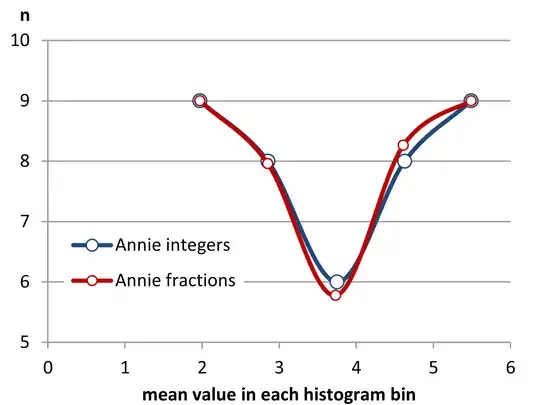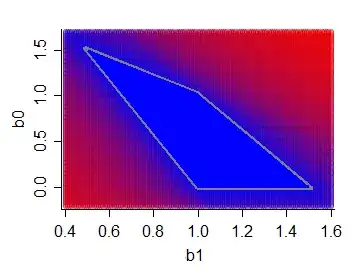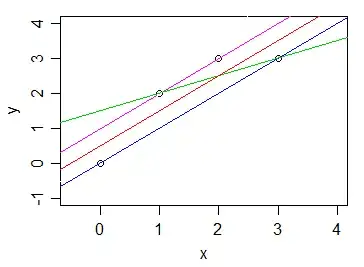So that this has some form of answer, let's look at what the OP has discovered, and then put some additional clarity/detail into that (I'm going to go into more detail than I normally would for a self-study question because of the issues with the question, which I think require some explanation):
The issue here is that with 3 parameters and two points the system is underdetermined.
Plotting the points immediately suggests that one can get a perfect fit with a straight line ($B_2=0$).
Simply looking at the plot, and the fact that we're fitting a quadratic through two poiints tells us that a second perfect fit is trivial - choose any $B_2$ and solve for the remaining values.

This non-uniqueness doesn't have anything to do with the non-uniqueness of least absolute values regression, since it works just as well with least squares or many other criteria where a perfect fit yields a minimum. As mentioned, this is simply due to the system being underdetermined. [As a result, this strikes me as a poor example for illustrating anything in particular about least absolute values regression.]
To see nonuniqueness of a least absolute values regression that isn't simply due to the system being underdetermined (i.e. where least squares would also have a non-uniqueness problem), you'd need more data values.
For example, consider fitting a straight line the following data:
x 0 1 2 3
y 0 2 3 3
Here, any line with the minimum value for $S=\sum_i|Y_i-B_0-B_1X_{i}|$ doesn't go through all the data points, but there's still a region of values that attains the minimum value for $S$ (deep blue region outlined in gray); larger values of S are less blue/redder:

Here are 4 of the lines, each corresponding to points in that optimal parameter region above:

All except the red one are points on the marked boundary in the first plot; the red one is an interior point inside the marked blue region in that first plot.
The red one is also least squares. It's an interior point in the (b1,b0) plot. The other three lines are corner points. If you imagine placing four (thin) poles at the indicated points in the (x,y) plot (sticking out in the z-direction, out of the screen), and pull a string taut close to the red line, then wiggle the string about within the constraints of the four poles, you're wandering about the optimal region.
There's a related example with additional explanation for an intercept-only L1 model here


